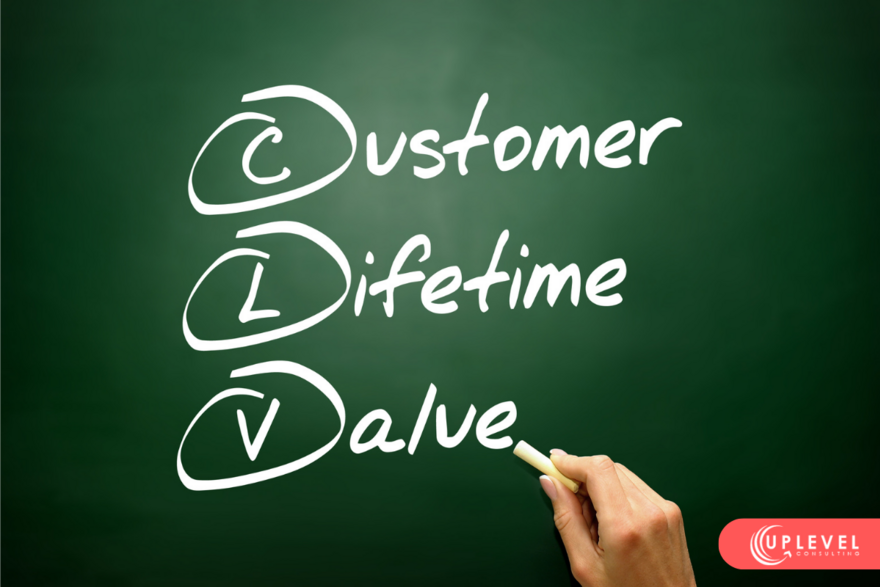Understanding Customer Lifetime Value (CLV) in Marketing

I hear it all the time, "What will I get if I spend that on marketing?" People who invest money in marketing, want to get a return on their investment and that's understandable. But in order to do that you have to be able to answer certain questions...
One of those is, what’s your CLV or customer lifetime value? Knowing the answer to this question helps you as the business leader make informed decisions about your marketing budgets, customer acquisition strategies and overall business growth.
Here we will explore what CLV is, why it's important, how to calculate it and how it can improve your marketing.
What is Customer Lifetime Value (CLV)?
Customer Lifetime Value (CLV), often referred to as LTV or CLTV, is a metric that tells you the total value a customer is expected to bring to a business throughout their entire relationship. In simpler terms, CLV measures how much revenue a company can expect to earn from a single customer over the duration of their engagement with the business.
Imagine you run an online clothing store and a customer purchases an average of $50 worth of products every month for five years. Their CLV would be $50 x 12 months x 5 years = $3,000. This means that, on average, this customer is expected to contribute $3,000 to your revenue during their five-year relationship with your brand. Ta da! That's the Customer Lifetime Value metric you need to help determine what will give you a smart ROI.
How Does CLV Help Determine Your Marketing Budget?
Understanding CLV is essential for making informed decisions about your marketing budget. Here's how...
- Targeted Spending: By knowing the CLV of your customers, you can allocate your marketing dollars more efficiently. High-CLV customers deserve more attention and targeted marketing efforts because they are likely to generate substantial revenue over time.
- Acquisition Costs: CLV helps you assess the cost-effectiveness of customer acquisition strategies. If the cost of acquiring a customer exceeds their CLV, it's an unsustainable strategy. Knowing this allows you to refine your acquisition tactics for better ROI.
- Retention Efforts: A significant portion of CLV comes from repeat purchases. By identifying high-CLV customers, you can implement retention strategies to keep them engaged and coming back for more.
- Segmentation: CLV data helps you to segment your customer base effectively. You can tailor your marketing messages and offers to different customer segments based on their CLV, increasing the likelihood of success.
In essence, CLV empowers businesses to make data-driven decisions, ensuring that marketing efforts are not wasted on low-value customers and are instead channeled towards those who are more likely to drive revenue.
Calculating Customer Lifetime Value
So, you might be thinking, "how do I find out my CLV? The most straightforward formula I've found is:
CLV = Average Purchase Value x Average Purchase Frequency x Average Customer Lifespan
- Average Purchase Value: This represents the average amount a customer spends in a single transaction. To find this value, divide your total revenue by the number of transactions over a specific period.
- Average Purchase Frequency: This indicates how often a customer makes a purchase within a given timeframe. Calculate it by dividing the total number of transactions by the number of unique customers during the same period.
- Average Customer Lifespan: This is the average number of years a customer remains engaged with your brand. To calculate it, you can use historical data or make an educated estimate based on industry standards.
Once you have these three values, simply multiply them to find the CLV. It's important to note that this is a simplified formula and you can adapt it to your specific business needs by incorporating more complex variables.
Why is Customer Lifetime Value Important?
There are many reasons why it's important to know your Customer Lifetime Value. Here are a few:
- Long-Term Strategy: It encourages businesses to focus on long-term relationships with customers rather than just one-off transactions. This shift in mindset can lead to sustainable growth.
- Resource Allocation: It helps to optimize marketing budgets so you can make sure resources are used where they'll have the most significant impact.
- Customer Segmentation: CLV enables better customer segmentation, allowing businesses to tailor their marketing strategies to different customer groups to increase the likelihood of a successful marketing campaign.
- Competitive Advantage: Understanding and utilizing CLV effectively can provide a competitive advantage, as it allows businesses to outperform competitors who may not be as data-driven.
- Profitability: Ultimately, CLV contributes to higher profitability. By focusing on retaining and nurturing high-CLV customers, businesses can increase their revenue streams and profitability over time.
To Sum Up Customer Lifetime Value
Customer Lifetime Value is a powerful metric to know so you can more effectively use your marketing budget. If you want a high ROI, you will want to know how to calculate your CLV and apply it to your marketing campaigns.
To be successful in business means your marketing focuses more on a one-off but rather helps to build stronger customer relationships, thrive in competitive markets and achieve sustainable growth.
Need help with your next marketing campaign, sprint or an annual plan for marketing your business? Reach out! I'm sure we can help.

0 comments
Leave a comment
Please log in or register to post a comment